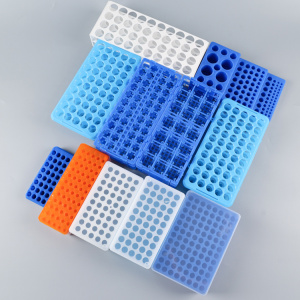Experiment failed? Maybe the problem lies in the small pipette tips!
Experiment failure is always a frustrating outcome, whether in colleges or corporate labs. But sometimes I repeatedly check the experimental steps, but I can't see where the problem is.
At this time, perhaps you can turn your attention to the usual inconspicuous experimental consumables. Taking pipette tips as an example, pipetting is an essential operation in the laboratory, but not only the tips that can be loaded are the tips that can be used. In the process of delicate experiments, low-quality tips will not only cause residual contamination to affect the sample, but also cause a large amount of liquid to remain, and cause pipetting errors. Many researchers' experiments have failed at this step. If the pipette and the tip are not matched accurately, it will affect the sealing and accuracy of the pipetting system.
So how to choose the right consumables?
Note on the selection of laboratory tip consumables
01According to the experimental needs, select the type and function of the tip
1. When the sample volume is unknown or inconsistent, the volume is not uniform. When testing animal or environmental liquid samples (such as blood, urine, swab, water quality, etc. samples), black conductive tips are required. The conductive tip can detect when it is inserted into the sample and when it stops, preventing the sample from being inserted too deeply into the sample, causing the sample to overflow the container and contaminating the entire process;
2. When the sample volume is the same and there is no special requirement for the experiment, just select the standard tip;
3. To avoid cross-contamination or protection, a tip with a filter element should be used;
4. To prevent the RNA/DNA in the experiment from being degraded and causing errors in the results, the tips without RNA/DNase should be used;
5. For precious samples with high sensitivity requirements or easy residues, the adsorption tip should be lowered to improve the recovery rate.
02 Judging the accuracy of pipetting tips
1. Good air-tightness of the suction head can ensure that the instructions issued by the workstation are perfectly executed, which is the key indicator for the selection of the suction head. The air-tightness can be judged by hovering after sucking the liquid;
2. The tip should not be hung with liquid, which will cause inaccurate pipetting. The tip test can be performed by trial.
03 Judge the quality of the tip
1. Tip additives: During the production process of the tip, chemical substances such as color developer and mold release agent will be added. The more additives, the greater the impact on pipetting. Therefore, it is necessary to choose tips with less additives.
2. Biological contamination: The pipette tip needs to ensure that the existing biological contamination has been cleaned up, and the tip manufacturer should issue a corresponding inspection report to ensure that there is no impact on the experiment.
3. When choosing a conductive tip, special attention should be paid to its conductivity. Only a tip with good conductivity can accurately detect the liquid level and avoid pipetting failure and sample contamination.
Yongyue Medical® pipette tips have been widely used by international first-line third-party companies for many years, providing compatible pipette tips specially designed for Eppendorf, Rainin and other brands.




